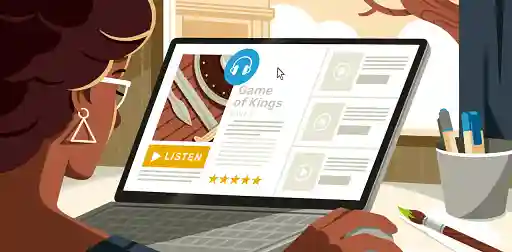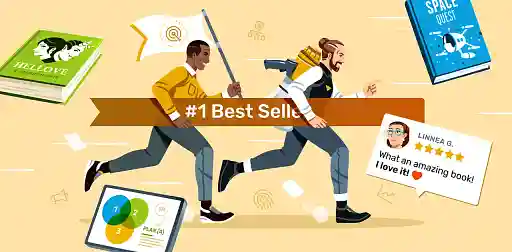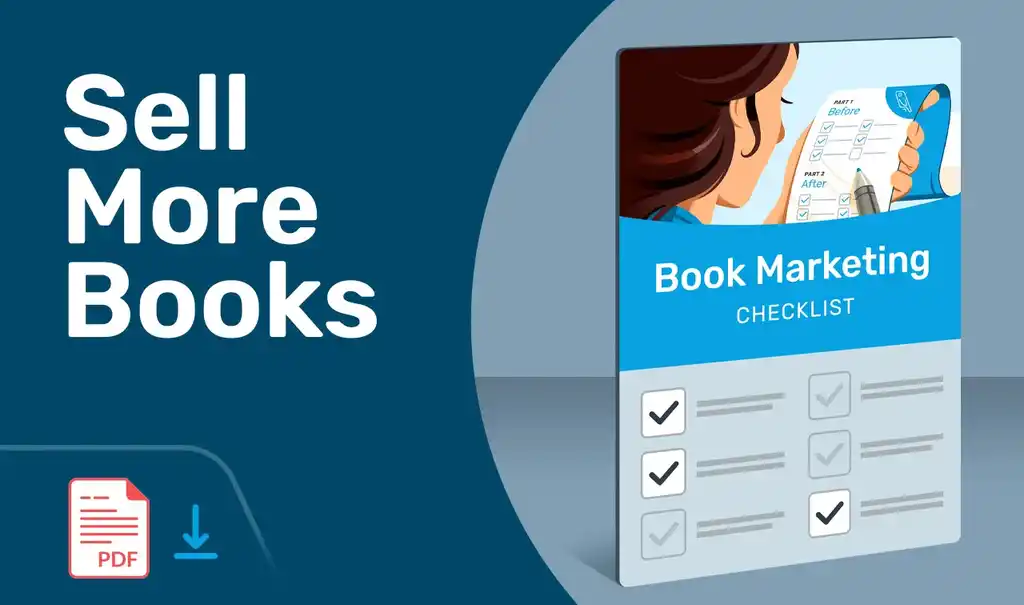Last updated on Oct 30, 2025
How to Build an Author Email List in 6 Simple Steps
Ricardo Fayet
Reedsy co-founder and Chief Marketing Officer, Ricardo Fayet has worked with hundreds of authors on their launches and marketing campaigns. He is the author of two bestselling guides on marketing for authors, and a regular presenter at the largest writers' conferences.
View profile →Email lists (or mailing lists) are incredibly powerful tools for authors. In my book How to Market a Book: Overperform in a Crowded Market, I emphasize that email is the number-one way to grow and reach your fan base.
Your mailing list, unlike social media platforms (with their fickle algorithms), is entirely within your control — and leveraging it means retaining readers who can be turned into life-long fans. With that in mind, let’s look at how to build your own mailing list in 6 practical steps.
1. Choose the right mailing list provider for you
3. Attract subscribers with a reader magnet
4. Grow your list through giveaways
5. Give your subscribers a warm welcome
1. Choose the right mailing list provider for you
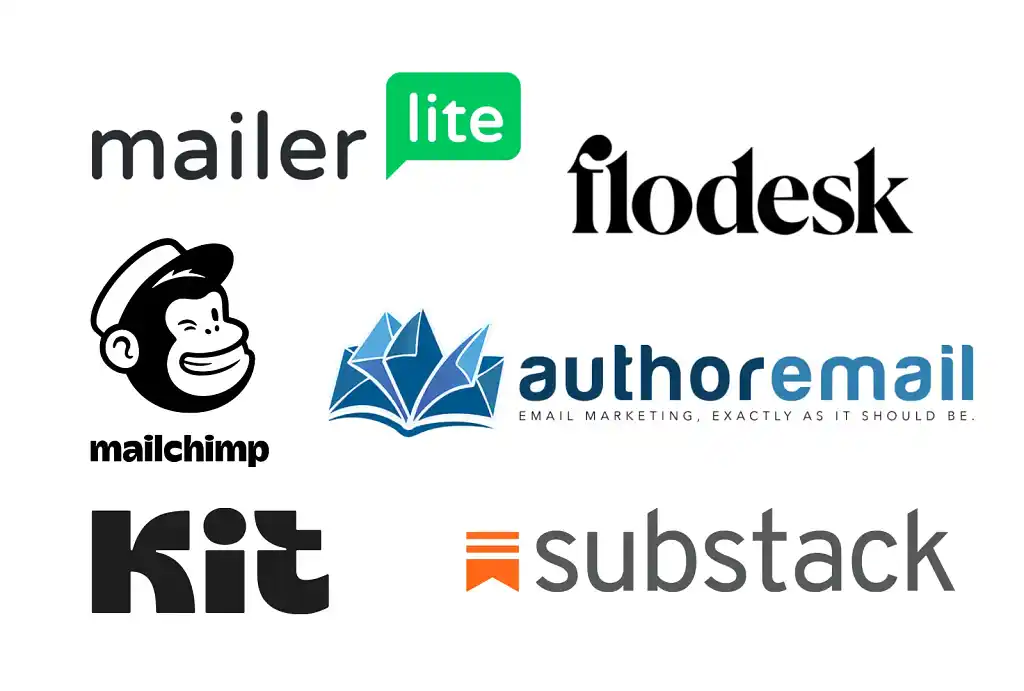
To run a mailing list, you first need to choose a service provider to help you manage it. Some providers will let you use their services for free if you’re just starting out and are only dealing with a small number of subscribers. (Of course, a mailing list that’s too big for a free plan is a wonderful problem to have!)
Popular providers include MailerLite, Kit (previously ConvertKit), Flodesk, as well as Active Campaign and ConstantContact. (MailChimp is another option that used to be very popular among authors, but has since changed its pricing plans, so I don't recommend it anymore.)
Each has its own advantages and disadvantages, depending on what you’re looking for, but I tend to recommend MailerLite to beginners. Here’s a quick overview of the top 5 options for authors, in my opinion:
If you want to read a full breakdown, sign up for this free email course on author mailing lists, taught by me (I discuss mailing list providers in Lesson #2).

FREE COURSE
How to Build Your Author Mailing List
Learn how to connect with your audience and sell more books with email.
2. Get an author website
Having an author website means that readers can learn about your work directly from you, putting you in the driver’s seat of your marketing strategy. If a reader enjoys your book, they're likely to search your name on Google (or in their favorite AI assistant) to learn more about you and your books — and when they arrive at your website, they’ll be primed to hear about you straight from the source.
This makes your website the perfect home for your email sign-up box, allowing you to host it within a “branded” environment. Readers can get a taste of your books, your ongoing projects, and your author personality. Then if they like the appetizer, as it were, they’ll opt into the full meal (i.e., your mailing list).
It’s a good idea to put a mailing list signup form on every page of your website, but make sure you’re not hounding your users. You can place a low-key signup box at the bottom of every page, but then choose just one page where you want to display it more prominently (typically your home page or contact page).
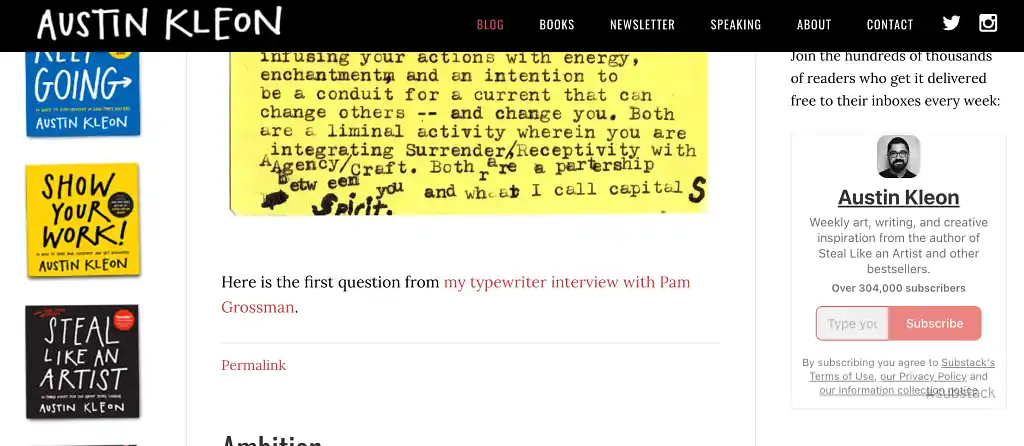
That said, as I discuss in my free e-book, how you build your website depends entirely on what you want readers to do once they’ve found it. If you primarily want newsletter signups, then feel free to display the signup box more prominently and/or consider installing exit pop-ups (more on that below). But if you’re more interested in selling books from your backlist, you should put those covers at the top of your homepage instead. Consider your overall strategy and how a mailing list fits into it.
Many (if not most) people are understandably wary of signing up to a lot of newsletters. You can reassure those people by clarifying how often you intend to email your audience and what exactly you plan to email about, as Leigh Bardugo does with her CTA below:

Fantasy author Leigh Bardugo’s newsletter sign-up includes a disclaimer promising she doesn’t intend to spam her subscribers. The note also adds some personality, which always helps.
Using exit pop-ups
An exit pop-up is a smart way to catch a visitor’s attention just as they’re about to leave your site. These pop-ups are triggered when a user’s mouse moves toward closing the tab or hitting the back button — giving you one last chance to engage them before they go.
Many e-commerce sites use exit pop-ups to offer discounts or special deals, but for authors, they can be just as effective at growing a mailing list. You can use them to remind visitors what they’ll gain by signing up — whether that’s exclusive content, updates, or a free story.
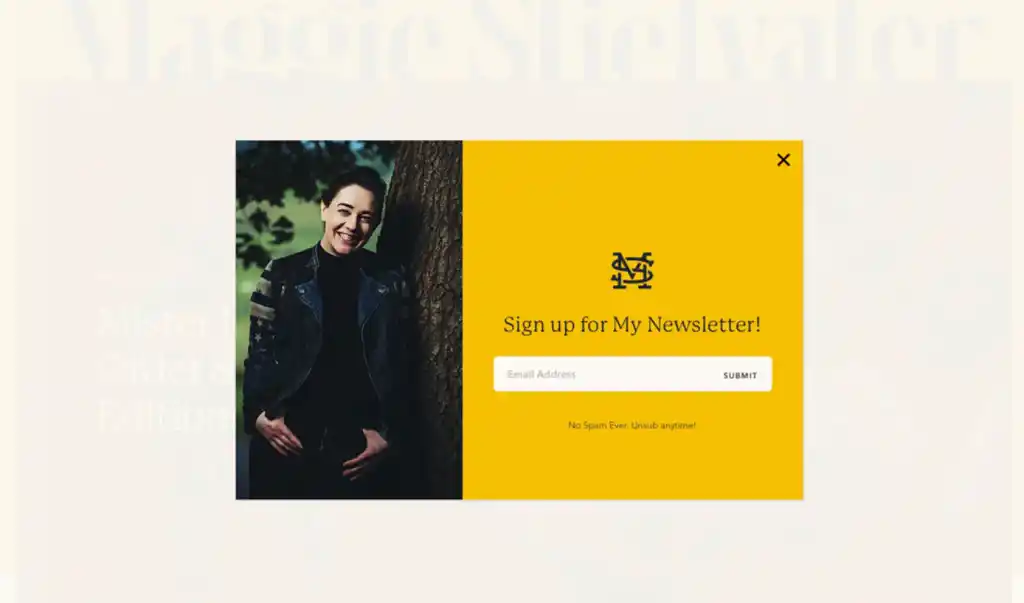
Remember, just because someone’s leaving your site doesn’t mean they’re not interested; they might have been short on time or simply missed your sign-up form earlier. An exit pop-up gives them a final opportunity to reconsider — and in today’s attention-driven world, that can make all the difference.
3. Attract subscribers with a reader magnet
A “reader magnet” gives people a concrete reason to sign up to your mailing list. The term was coined by author Nick Stephenson, and it’s basically what it says on the tin: an offering that attracts readers, in the same way that magnets attract metal. (You can check out Reedsy’s interview with him here for more on the subject.)
Offer something valuable — for free
This “magnet” typically takes the form of a free gift, instantly emailed to anyone who signs up to your mailing list. Here are some examples of reader magnets you could try:
📚 Fiction Reader Magnets
-
Novella or short story set in the same universe as your main series
-
Character backstory or deleted scenes
-
Exclusive epilogue or alternate ending
-
Free audiobook
📑 Nonfiction Reader Magnets
-
Video course or training
-
E-mail course
-
Checklist, template, or cheat sheet
-
Exclusive webinar
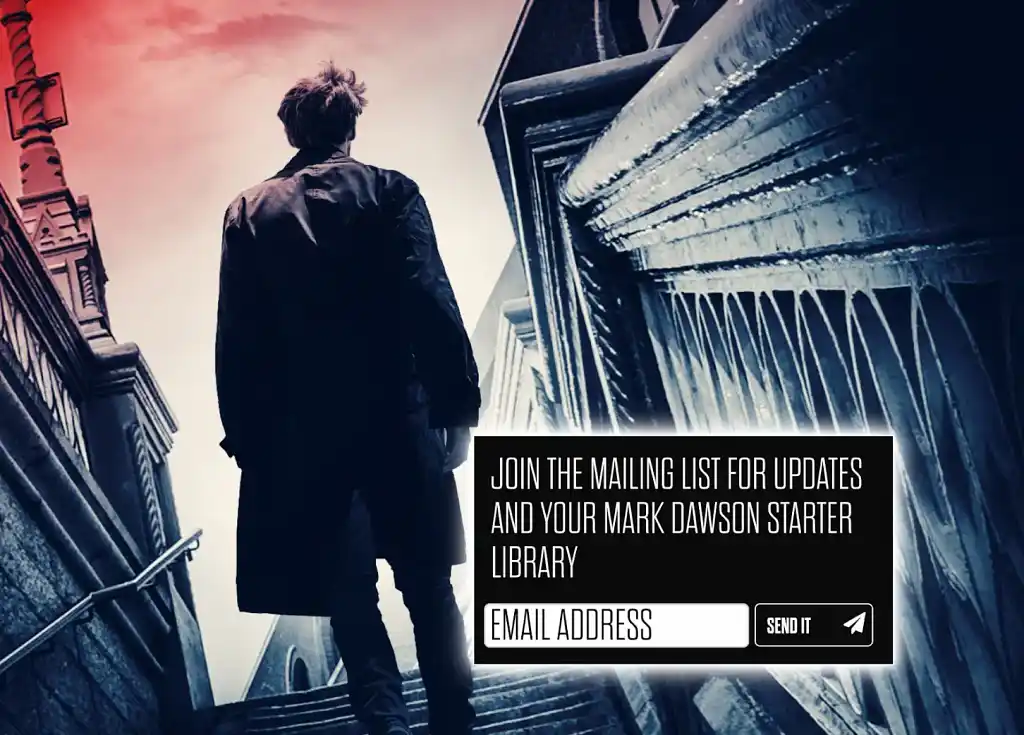
A short guide may work especially well if you’re a nonfiction author, as you can distill or tease your practical knowledge in a highly digestible format. For fiction authors, however, it’s generally best to stick to one of the other forms of reader magnet.
💡Pro tip from Nick Stephenson: Consider making one of your books “perma-free” — meaning that it will always be available as a reader magnet. Not only can this work well for your mailing list, but also for general visibility: “Perma-free is a wonderful way to get traffic, because you can get 50-100x more downloads on a free book. Then you can find ways to convert that traffic into paying customers.”
Make it easy for readers to find
Reader magnets should be easily findable on your website, shared on your social media accounts, and even highlighted in the opening pages of your book itself. That way, they’ll be visible in the “Read Sample” section of your book on Amazon — and anyone browsing your book’s pages will be able to see the magnet offer, regardless of whether they actually buy the book or not.
(Ideally, they’ll also go ahead and buy the book… but if you can’t hold their attention for more than a few pages, at least you’ll have gotten a foot in the door, marketing-wise.)
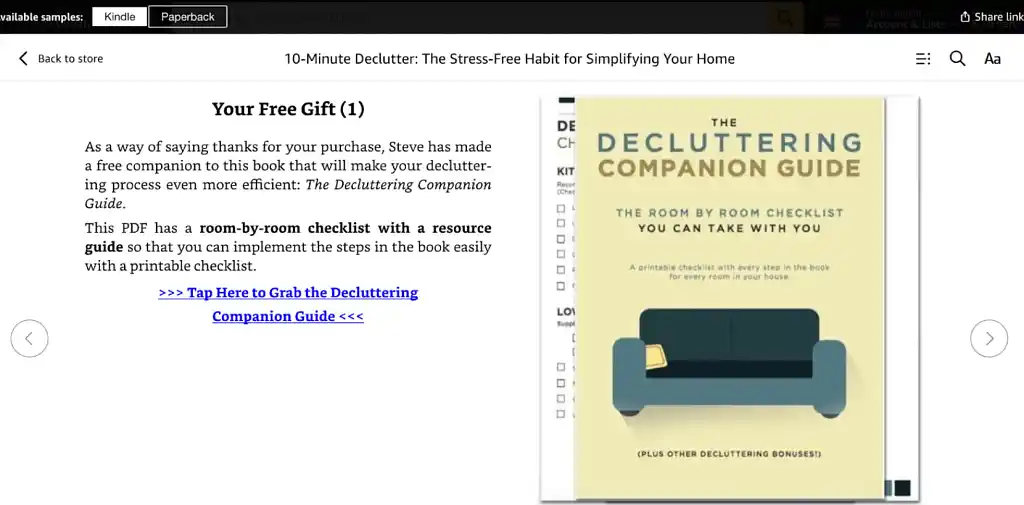
An example of a reader magnet in the “Read Sample” preview of 10-Minute Declutter: The Stress-Free Habit for Simplifying Your Home by S.J. Scott and Barrie Davenport.
Warm vs cold magnets
In my book, I talk about “warm” and “cold” magnets. The first type is designed to attract readers who have already interacted with you — for example, by reading your book. You could offer an unseen epilogue to your story in exchange for their email address. Cold magnets are the exact opposite — meant for an audience who haven’t yet found your work. In this case, a great option could be offering a free novella or an audiobook sample.
In a perfect world, you’d have both cold and warm magnets available, so you can attract as many subscribers as possible. You might even give people two options when they sign up to your mailing list. Or just try to place your magnets where they make the most sense — for example, having a “warm” magnet at the end of your ebook, but putting a “cold” magnet on your website to appeal to potential new readers.
Here are some examples of warm and cold magnets you could use:
|
🔥Warm Magnets (for existing readers who’ve finished a book) |
☃️ Cold Magnets (for brand-new readers unfamiliar with you) |
|
Bonus epilogues or deleted scenes |
Free novella or short story in the same universe |
|
Character backstories |
First-in-series offered free |
|
Exclusive illustrations or maps tied to the main story |
Genre-specific sampler (e.g. “3 Magical Tales of…” bundle) |
|
Alternative POV characters |
Cheatsheet, checklist, or guide (especially for nonfiction) |
|
Behind-the-scenes author notes or worldbuilding extras |
Short prequel or origin story introducing your world |
|
Exclusive Q&A or “letters from the characters” |
Audiobook sample or free mini-audiobook |
|
Extended universe material (side story in the same series) |
Video course, training, or webinar (nonfiction) |
|
Exclusive sneak peeks of upcoming books |
Giveaway entry (signed copy, swag, etc.) |
If all this sounds complicated or overwhelming, don’t hesitate to partner up with a professional marketer. They’ll help you establish clear strategies for reaching new audiences.
Hire an expert
Sara U.
Available to hire
Digital marketer with a tech and analytics background to help you get those sales going! Mentored by Reedsy's CMO. Expert on Amazon Ads.
Rebekah Z.
Available to hire
Avid knitter with a healthy love of Nic Cage - and +15 years experience marketing/design in publishing (traditional and indie).
Martyn B.
Available to hire
Forward-thinking and creative book marketer. Top-200 Reedsy Provider. Fascinated by doing things differently to get people to buy books!
4. Grow your list through giveaways
Similar to reader magnets, giveaways can also generate a lot of attention. To draw readers that are interested in your genre, select books similar to your own work and give them away to one of your subscribers.
You can give away one of your own books, of course — but this will only work if you don’t already offer it as a reader magnet. Furthermore, giving away a book by another author can be a great way to cross-promote with that author: you give away their book, they give away yours.
Use cross-promotions to build your list
Cross-promoting is exactly what indie author ML Banner did, and it helped him reach #1 on Amazon with his very first novel. Banner says:
I’m a big believer in collaborating with other authors in your genre… you can ask them if they’d like to review your book, or tell their audience about it. And likewise, when they are the ones running a countdown or launching a book, you will tell your audience.
This is something really unique and exciting about the writers’ world we’re in. These people who are trying to sell their books in the same genre […] can be your best allies. They already have developed their platform, they already have a readership. So you just need to have them tell their readers about your book.
For more on cross-promotions, check out our blog post on How to Promote Your Book.
Offer giveaways to attract more subscribers
While the title already gives it away (see what we did there?), giveaways are a great idea to attract attention. And, instead of potentially losing money by giving away multiple things for free, you can invest in just one item, while still reaping the benefits of a reader magnet.
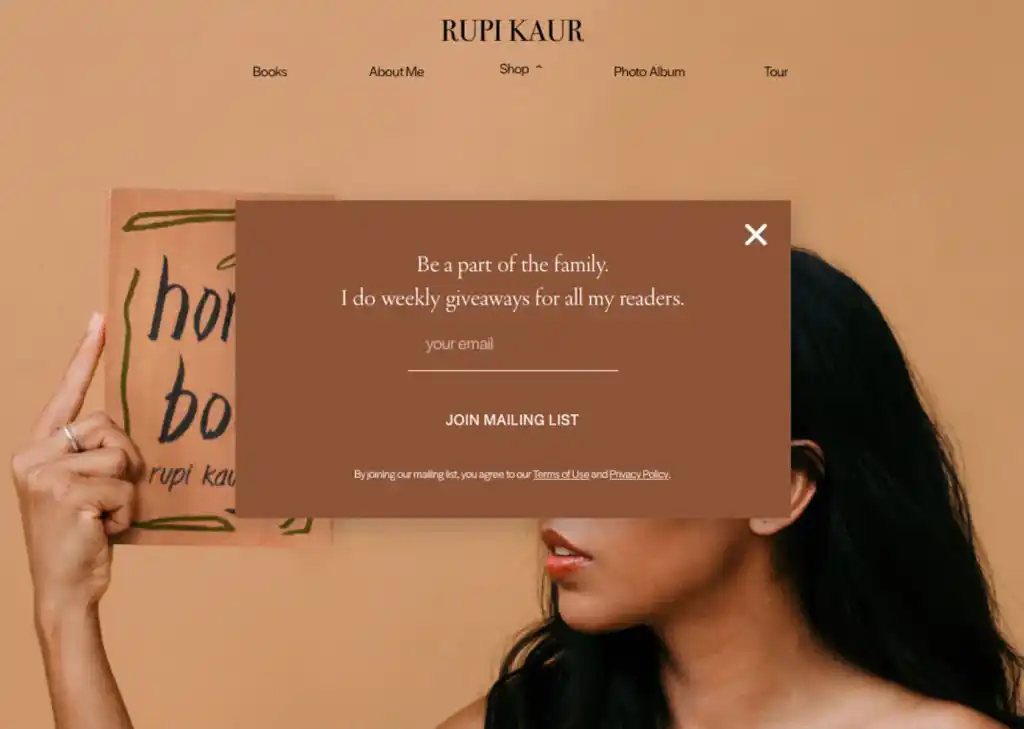
Bestselling poet Rupi Kaur highlights her weekly giveaways as a magnet to grow her list.
Weed out the freeloaders
Growing your list through giveaways does mean that you may attract people who are only interested in freebies — so you’ll need to clean up your list before you try to sell anything to them. Only contacting people who actually want to buy your books not only increases your morale, but also your email deliverability.
One author who’s done this successfully is Derek Murphy. His recommended tactic is to actually keep your main mailing list separate from the giveaway list. Categorizing your subscribers like this gives you the best of both worlds — when you have a product to sell, you can leverage the buyer list; if you’re running a giveaway or promotion, the freebie list comes in handy.
💡Pro tip from email marketing expert Neil Patel: Target your emails to specific folks so they’re getting the messages that matter to them. This can increase open and click-through rates and, ultimately, conversions.
5. Give your subscribers a warm welcome
Of course, you can’t get complacent with a mailing list. These people will unsubscribe at any time if they feel taken advantage of, spammed, or like there is nothing of value for them in your newsletter.
You want to create a connection with the reader. Ideally, your emails should strike a balance between building a relationship (soft sell) and getting them to buy your books (hard sell). There are several things you can do to make sure your readers stay engaged.
Set up a welcome automation
Don’t let the term “welcome automation” put you off. I’m just talking about an automatic email sequence sent to anyone who signs up to your list.
Typically, the first email will simply say hi, thank them for taking an interest in your list, and outline the kind of content they can expect to see in your newsletter. If someone signed up through a reader magnet, be sure to deliver the freebie that you promised them!
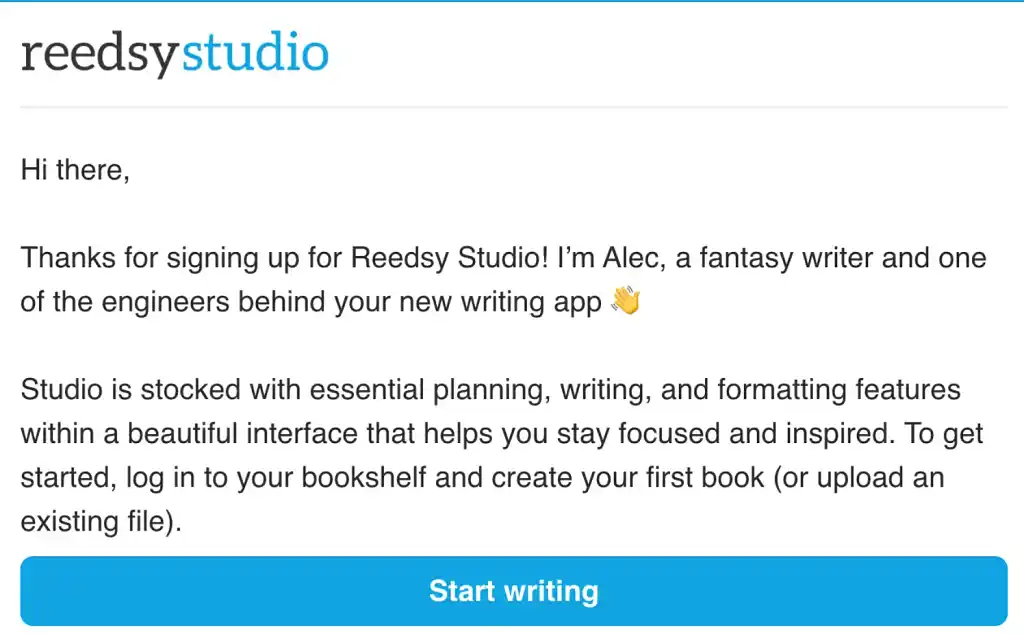
If you’ve already created a lot of online content they might’ve missed, you can also set up a second email to follow a few days later, listing a handful of blog posts, interviews, or resources that could be of interest to your readers.
💡 Pro tip: If you plan to set up a welcome automation, make sure you do that before setting your list live. Otherwise anyone who subscribes before the automation is ready will receive nothing.
Don’t put everyone into one big list
List segmentation is a little technical, but it’s really important, so bear with me. While you don’t have to segment from the beginning, the longer you put it off, the more difficult it will be once you have a lot of subscribers — so if I were you, I’d try to think proactively and divide up your subscribers ASAP.
Here’s how it works: you’ll be gaining new subscribers from various sources — some might come for giveaways, others for your reader magnet, and others from your warm magnet. Naturally, these people will have different levels of awareness of (and investment in) you and your work. This means you’ll want to put them into different segments based on this context.
-
For more casual subscribers (e.g., from giveaways): Nurture these people over time and let them gradually get to know you.
-
For anyone who deliberately signed up (maybe they met you at a book reading, or a talk, or a conference): Add these people into a segment where — come launch time — you can ask them for an early review or to be part of your group of early promoters, also known as your “street team.”
🎁 To learn more about building a successful author mailing list, check out this book from Tammi Labrecque: Newsletter Ninja: How to Become an Author Mailing List Expert.
6. Keep your readers engaged
Unsurprisingly, maintaining an email list does not simply consist of throwing random emails at an increasing number of people. The point is to get your subscribers to open your newsletter, read it, and engage with its content.
To that end, you need to make sure that you’re personally interacting with them, getting in touch often, and keeping them in the loop when important developments arise.
Interact with your subscribers
Ask your readers questions, and then respond to them personally. Not only do people appreciate anyone who takes the time to reply, but this is also a great way for you to learn more about the people who read your newsletter, their interests, and how to retain and convert them.
You can even include a question in one of your welcome emails asking your readers what they might like to see in your newsletter — and if certain answers come up a few times, plan for it to happen.
💡 Pro tip: Encourage replies as much as possible! When a subscriber replies to your emails, their email client will automatically “whitelist” your email address. Over time, that means your emails will end up in fewer spam/junk folders.
Beyond just answering questions, remember that newsletters are an informal and friendly medium. Don’t treat your newsletter as if it’s your diary — but do use this space to reflect on lessons you’ve learned in your publishing journey, recommend books by other authors, or tell personal anecdotes that might pique readers’ interest. (After all, in today’s Substack era, having a distinctive “newsletter voice” is more important than ever!)
Email your list regularly
It’s your decision just how often to get in touch with your audience. However, as a good rule of thumb, aim for no more than twice a week and no less than once a month. You don't want subscribers to forget you exist, but you don’t want to spam them either. (Speaking of which: emailing your list every single day guarantees you’ll see your numbers diminish. Don’t do it.)
And bonus points, of course, if you can compose great content that readers will look forward to reading!
Build hype toward your book launch
Your list will be invaluable as you start to prepare for your book launch. You can email your list a bit more frequently as you approach your release date, as you’ll have lots of important things to share. So, what can you do to build hype? A few ideas:
-
Tease the opening lines of your forthcoming book;
-
Promise to reveal your cover on a certain date;
-
Share any press or advance review coverage you’ve received;
Or whatever you think readers would enjoy. There’s no limit to what you can do to generate interest in your book. What’s most important is to tap into the genuine enthusiasm that led you to write the book in the first place.
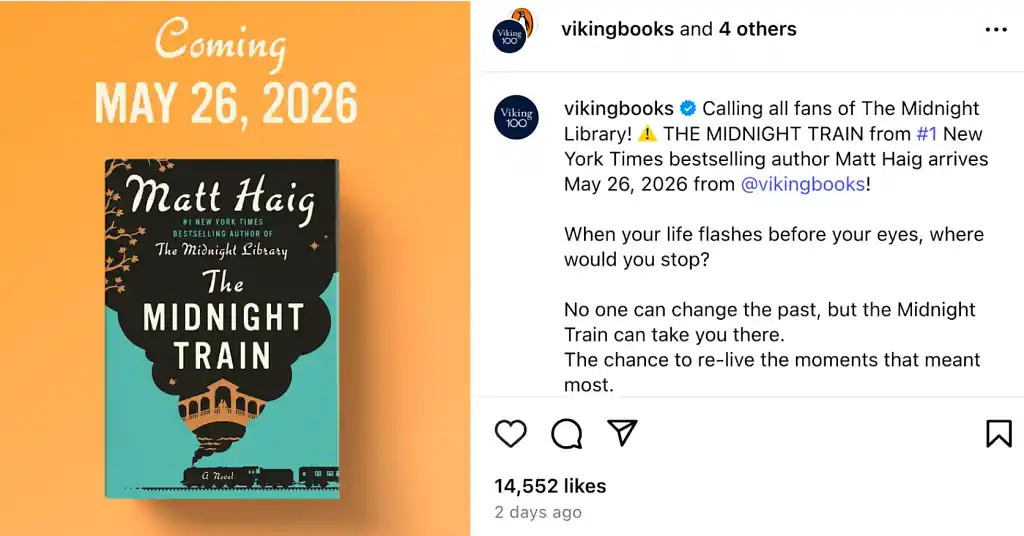
Cover reveals can be done on social media or via a mailing list — and not just by indie authors, but by large publishers too!
Whatever you choose to include in your newsletter, remember to always think about it from your readers’ perspective. They’ve voluntarily signed up to hear from you, so keep your emails as short as possible, and don’t abuse their trust by emailing them too much or sending irrelevant information.
💡Pro tip: Try to stand out without going too far “over the top”. One great tool for this is Bonjoro, which allows you to send a personalized video greeting to your new subscribers and has integrations with all email marketing services. Personal videos in emails are still rare, so that’s one easy way to stand out and make sure your readers remember you!
Make a genuine effort to offer value to your readers, and you’ll reap the results in the long term. For more insights into how to market your book to boost sales, don't forget to check out the free course below — and happy emailing!

FREE COURSE
Book Marketing 101
Learn seven tried-and-true strategies for boosting book sales.



